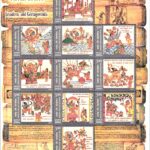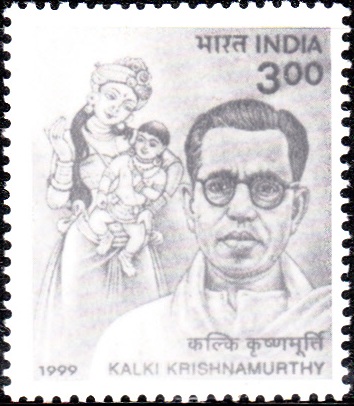
Dineshnandini Dalmia
A commemorative postage stamp on Smt. Dinesh Nandini Dalmia, an Indian Hindi poet, short story writer and novelist :

 Issued by India
Issued by India
Issued on Oct 11, 2009
Issued for : The Department of Posts is happy to issue a commemorative postage stamp on Dr. Dineshnandini Dalmia.
Credits :
Stamp & FDC : Brahm Prakash
Cancellation : Alka Sharma
Type : Stamp, Mint Condition
Colour : Multi colour
Denomination : 500 Paise
Stamps Printed : 0.4 Million
Printing Process : Wet–offset
Printer : Security Printing Press, Hyderabad
Name : Dineshnandini Dalmia
Born on Feb 16, 1928 at Udaipur, Rajasthan, India
Died on Oct 25, 2007 at Delhi, India
About :
- Padma Bhushan Dr. Smt. Dineshnandini Dalmia’s personal and literary journey portrays a bold departure from the prevailing trend of her times. Her life story has a fictional aura to it which is reflected all through her literary works.
- Born on 16.02.1928 in Udaipur, she started writing as Dineshnandini Chordia at the age of 13 to continue as Dinesh Nandini Dalmia after her marriage to Shri Ram Krishna Dalmia the top industrial mogul of the country of the time. In her early years, when her poem ‘Niraash Aasha’ was published, it drew the attention of the veteran poets Subhadra Kumari Chauhan and Mahadevi Verma. Her first book ‘Shabnam’ made a deep impact and she was honoured with the ‘Sakseria’ Award. Several successful volumes of prose-poems later she ventured into the domains of poetry, short stories and novel writing and was honoured with the Padma Bhushan in 2006.
- She made daring departures from the established style of metered romantic poetry that led her to pioneering a new style of prose poems “Gadya kavya”. She was also the first woman poet to write confessional poetry. It was a period when Hindi romanticism was at its height. Not that she was untouched by the romanticism; it was discernible in the syntax, diction, subjectivity and emotional intensity of her works. She was remarkable in her craft and content in which she differed from both her predecessors and contemporaries.
- Her sensitivity to a woman’s predicament and her deep insight into the inner and outer worlds of women in Indian society give her an unrivalled position in Hindi literature. Author of more than 35 novels and an equal number of poetical works, she lived and wrote through successive generations, managing to keep her idiom alive to the contemporary, in Hindi literature.
- She had the distinction of being Rajasthan’s first post-graduate woman. She rebelled against the purdah system and fought against gender bias, be it in education or in the way she wanted to live her life. She always followed her heart and did what her conscience dictated and tradition forbade. A firebrand author, she was the quintessential feminist of her times. Her books also talk about her personal journey: tortuous but full of adventure, where she walked down a path considered taboo for the women of her times.
- Her lifetime spanned multifarious activities. She was the founder member and President of The Institute of Comparative Religion and Literature, Indo-China Friendship Society, Lekhika Sangh, and also Chief Editor of the magazine ‘Richa’ initiated by her. She was the literary Consultant to several TV serials and her novel Phool Ka Dard was made into a highly acclaimed telefilm.
- She was awarded as Doctorate in 2005 for her literary work by Rani Durgavati University, Jabalpur. She was awarded ‘Mahila Sasakthikaran Puraskar’ in 2001 from the Hindi Sahitya Akademy, Delhi. She received the ‘Prem Chand’ award for her work ‘Mujhe Maaf Karna’ (Forgive me). Hers was indeed a case of walking the talk.
- Text : Based on material provided by the proponent.
Subscribe
Login
0 Comments







